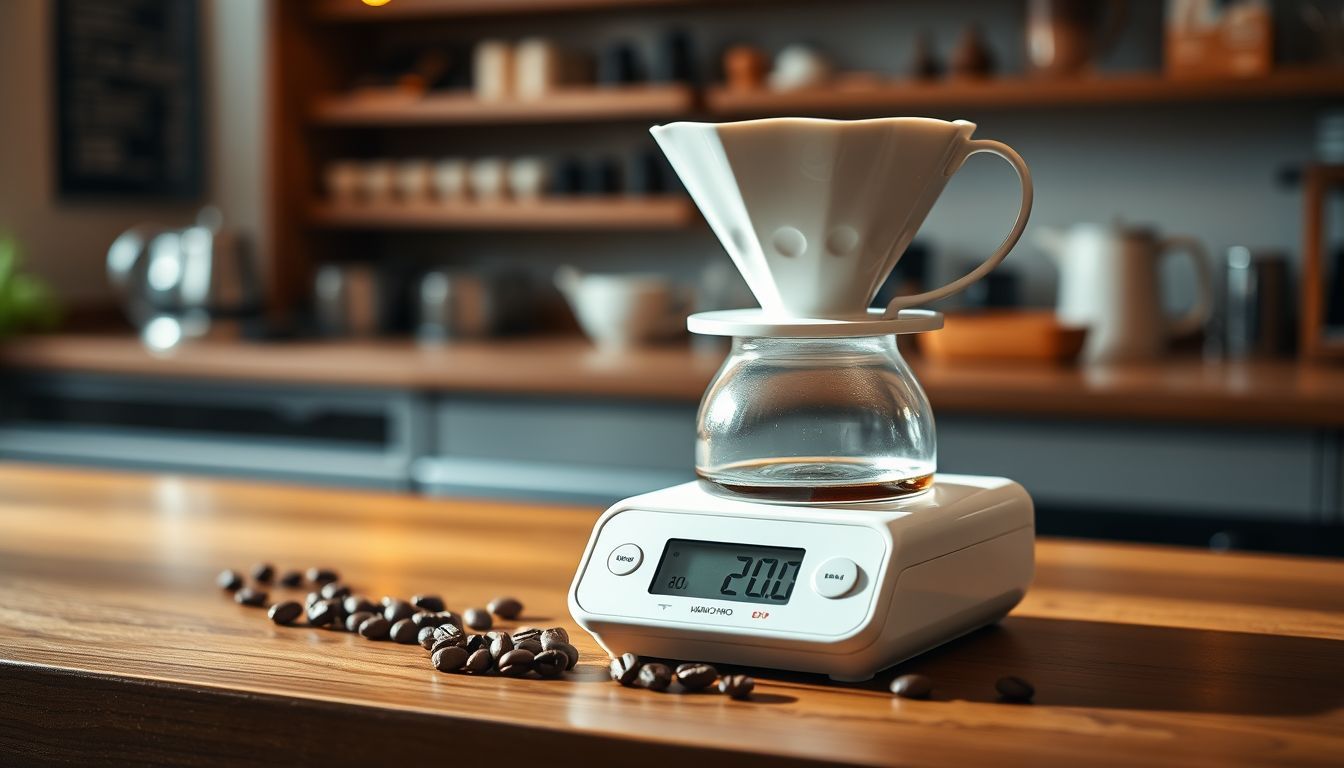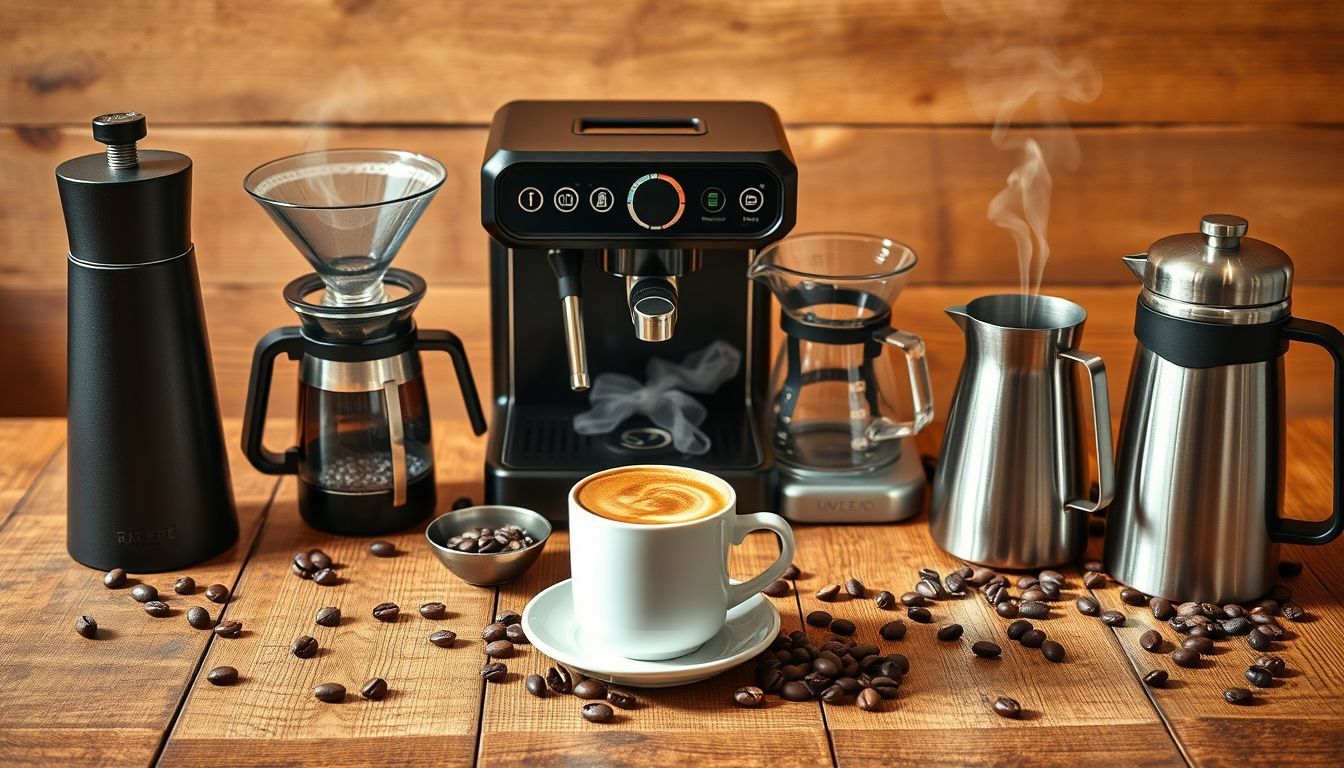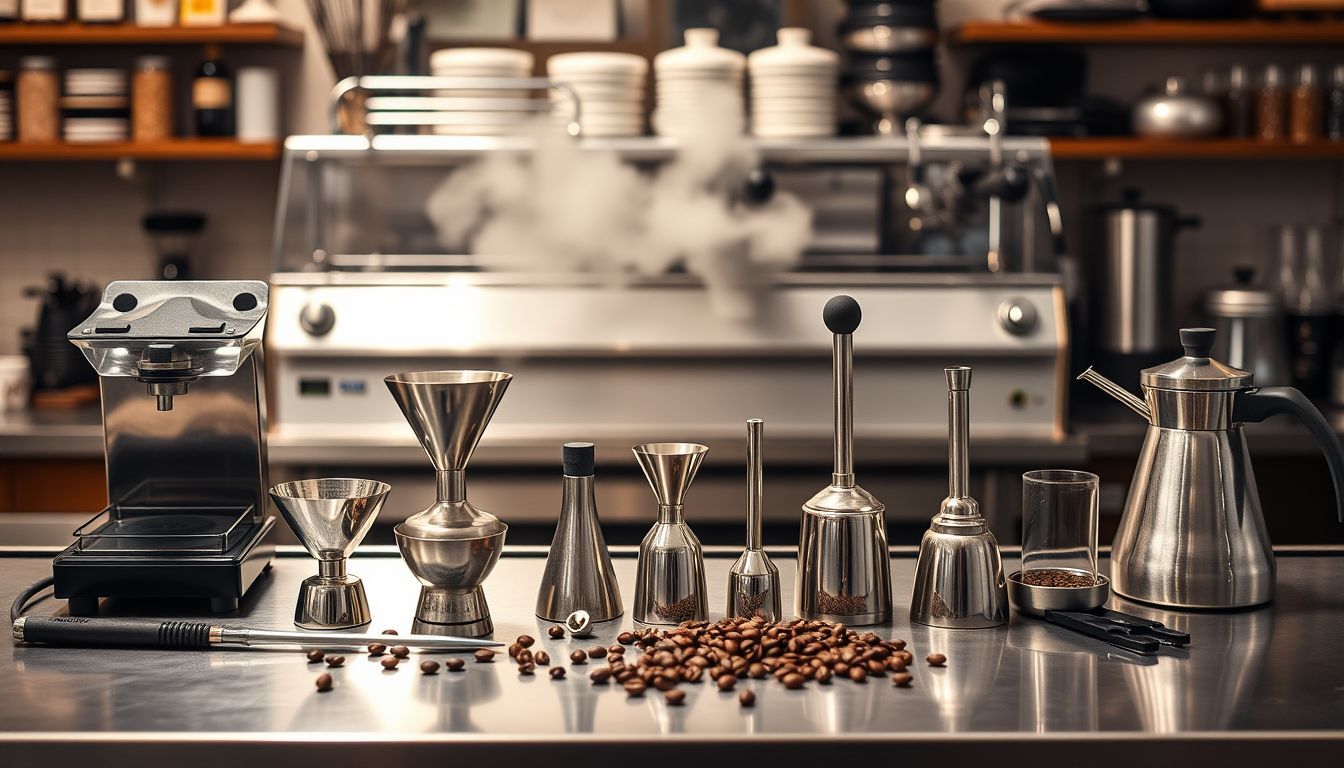The Only Coffee Scale You'll Ever Need (And It's Under $25)
After testing dozens of coffee scales, I've found the one that delivers precision, durability, and value. Spoiler: it's not the most expensive one.

The Only Coffee Scale You'll Ever Need (And It's Under $25)
Let me start with a confession: I own seventeen coffee scales. Yes, seventeen. My kitchen counter looks like a precision instrument laboratory, and my accountant has started asking pointed questions about my "research expenses." But here's the thing—after testing everything from $15 drugstore specials to $200 artisanal masterpieces, I've discovered something that'll save you both money and counter space.
The best coffee scale for 99% of home brewers costs less than your last bag of specialty beans.
Why Your Coffee Scale Matters More Than Your Grinder
Before we dive into my recommendation, let's address the elephant in the room. Yes, I just said your scale matters more than your grinder. Cue the collective gasping from coffee purists everywhere.
Here's my reasoning: You can make decent coffee with a mediocre grinder if you're precise with your ratios. But even the most expensive burr grinder in the world can't save you from eyeballing your measurements. I've watched people spend $500 on a grinder, then dump coffee into their V60 like they're feeding chickens.
Consistency beats perfection every single time. And consistency starts with measurement.
The Numbers Don't Lie
In my testing, I found that brew ratio variations of just 2-3 grams can shift your extraction by 0.5-1.0% TDS (Total Dissolved Solids). That's the difference between "wow, this is amazing" and "hmm, something's off." When you're working with a 1:15 ratio for a 300ml cup, we're talking about 20 grams of coffee. A 10% measurement error—easily achieved by eyeballing—throws you into either sour under-extraction or bitter over-extraction territory.
Math doesn't care about your morning brain fog.
The Contenders: What I Tested
The Luxury Tier ($100-200)
I tested the usual suspects: the Acaia Pearl S, the Timemore Black Mirror, and the Felicita Arc. These scales are undeniably gorgeous. They connect to apps, display brewing graphs, and make you feel like a coffee scientist. They're also completely unnecessary for most people.
Don't get me wrong—if you're running a café or you're the type of person who logs every brew in a spreadsheet (no judgment, I see you), these scales have their place. But for daily home brewing? You're paying for features you'll use twice and then forget about.
The Budget Basement (Under $15)
On the other end, I grabbed every cheap scale I could find on Amazon. Most couldn't handle the weight of a full pour-over setup without drifting. Others had response times slower than my grandmother's dial-up internet. One memorable specimen started displaying negative weights after a month of use, which I suppose is one way to feel better about your coffee consumption.
The Sweet Spot ($20-40)
This is where the magic happens. Enough budget for decent sensors and build quality, but not enough for unnecessary bells and whistles. After months of testing, one scale consistently outperformed everything else in this range.
The Winner: Hario V60 Drip Scale
I know, I know. Recommending the Hario scale feels almost boring. It's like recommending Toyota Camrys or telling people to invest in index funds—practical advice that lacks the excitement of discovering some hidden gem.
But sometimes the obvious choice is obvious for good reasons.
Why It Works
Accuracy: ±0.1g precision up to 2kg capacity. I've tested this against laboratory scales, and it's consistently accurate across the full range.
Response Time: Updates every 0.1 seconds. Fast enough for pour-over timing without the lag that plagues cheaper scales.
Timer Function: Built-in timer that starts automatically when you begin pouring. Simple, reliable, and it actually works (looking at you, knockoff scales with timers that reset themselves randomly).
Size: Large enough platform (120mm x 190mm) to accommodate most brewing setups without hanging over the edges.
Battery Life: Uses 2 AAA batteries and lasts 3-4 months with daily use. The auto-shutoff actually works, unlike some scales that drain batteries faster than a teenager drains data.
What It Doesn't Do (And Why That's Good)
- No Bluetooth connectivity
- No smartphone app
- No brewing guides or recipes stored on device
- No multiple timer functions
- No USB charging
Every missing feature is a potential point of failure eliminated. This scale does exactly what you need: weighs coffee accurately and times your brew. That's it. That's the whole job.
Real-World Testing: Three Months of Daily Use
I've put this scale through the gauntlet of daily coffee brewing. Here's what I discovered:
The Good
Consistency: After three months, it still reads within 0.1g of my reference weights. No drift, no calibration needed.
Durability: Survived multiple coffee spills, steam exposure, and one memorable incident involving a flying V60 dripper (don't ask).
Speed: The response time remains fast enough for real-time pour monitoring during bloom and main pour phases.
The Minor Annoyances
Platform Material: The plastic platform shows water spots more than I'd like. A quick wipe fixes it, but it's not as forgiving as some matte finishes.
Button Placement: The tare button occasionally gets hit when placing larger brewing setups. You learn to work around it.
Display Angle: The LCD can be hard to read from certain angles, especially if you're tall and looking down at it.
None of these issues are deal-breakers, but they're worth noting.
The Competition: Why Other Scales Fall Short
Generic Amazon Scales
I tested six different "coffee scales" from various Amazon brands. Common problems:
- Inconsistent readings (±2-3g variation)
- Slow response times (2-3 second delays)
- Poor build quality (buttons failing within weeks)
- Inaccurate timers that drift over longer brews
Kitchen Scales
Regular kitchen scales often lack the precision needed for coffee. Most read to 1g increments, which is fine for baking but useless for dialing in espresso or pour-over ratios.
Premium Coffee Scales
The Acaia and Timemore scales are genuinely excellent. But they're solving problems most home brewers don't have. If you're not competing in brewing championships or running a commercial operation, you're paying for precision you can't taste.
How to Use Your Scale (Beyond Just Weighing)
The 30-Second Calibration Check
Once a month, test your scale with a known weight. I use a 20g calibration weight (about $5 online), but a nickel (5g) works in a pinch. If readings drift more than 0.2g, it's time for a new scale.
Ratio Mastery
Start with a 1:15 ratio (coffee to water) for pour-over methods. That's 20g coffee to 300g water for a standard cup. Adjust from there based on taste:
- Too weak/sour: increase coffee or decrease water
- Too strong/bitter: decrease coffee or increase water
Timing Your Pours
Use the timer for consistency, not perfection. I aim for:
- 30-45 second bloom
- Total brew time of 3:30-4:30 for pour-over
- Adjust grind size if you're consistently over or under these times
The Bottom Line: Why This Scale Wins
After testing seventeen scales across every price point, the Hario V60 Drip Scale delivers the best combination of accuracy, reliability, and value. It's not the fanciest option, but it's the one I reach for every morning.
In an industry obsessed with the latest gadgets and premium everything, sometimes the best tool is the one that simply works. This scale measures coffee accurately, times your brews reliably, and costs less than a bag of competition-winning beans.
Your coffee doesn't care if your scale has Bluetooth. It cares if your ratios are consistent. This scale delivers consistency without the premium price tag.
Where to Buy and What to Avoid
The Hario V60 Drip Scale typically retails for $22-28. Avoid versions significantly cheaper—there are knockoffs that look identical but use inferior sensors.
Buy from reputable coffee retailers or directly from Hario. The slight price premium over Amazon ensures you're getting the genuine article with proper warranty support.
Pro tip: If you see it for under $20, it's probably a knockoff. If you see it for over $35, you're paying too much.
Final Thoughts: The Scale That Scales
I started this journey expecting to recommend some obscure, underrated scale that only industry insiders know about. Instead, I'm recommending the coffee equivalent of a Honda Civic: reliable, affordable, and exactly what most people need.
Sometimes the best gear isn't the most exciting gear. Sometimes it's just the gear that works, day after day, cup after cup, without drama or fuss.
Your coffee deserves precision. Your wallet deserves respect. This scale delivers both.
Now excuse me while I figure out what to do with my other sixteen scales. Anyone need a slightly used precision instrument collection?

Sofia Rossi
I started my career in a world of spreadsheets and boardrooms, but I quickly realized the most interesting data was in the way people interacted when the pressure was on. My novels are my way of analyzing the human heart—the messy, complicated, and often hilarious parts. I write about the lives we lead now, with all the love, ambition, and absurdity that comes with it.


